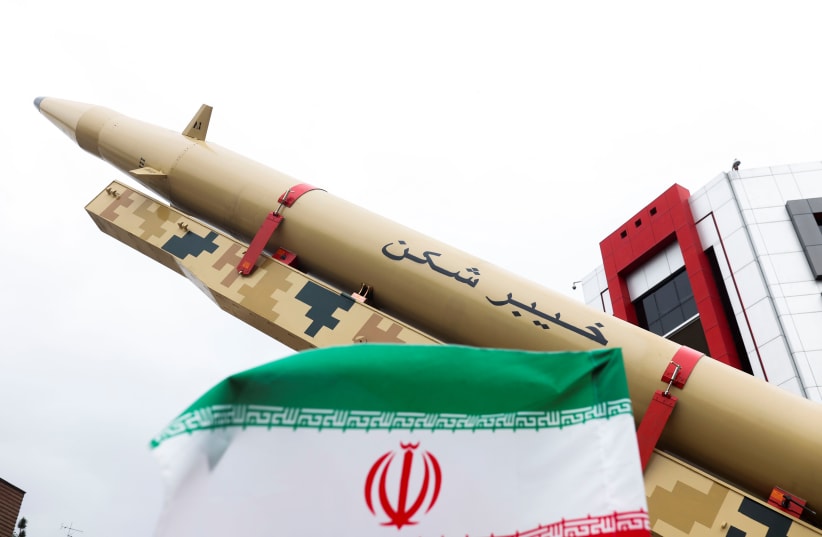Iranian pro-government media reported extensively on Wednesday about the Saqr missile, noting that it had been used in Yemen by the Iran-backed Houthi group, as well as in Iraq, to target US forces and also in Syria. This links Iran to all these attacks, without explicitly taking credit for them.
The missile
The Tasnim report noted that this “mysterious” missile has been used in many places, all of them linked to pro-Iran forces around the Middle East. It explains how the missile behaves like a cruise missile and a “loitering” munition, that it can detect targets with optical and thermal systems.
Additionally, according to the report, it “patrols” the sky as it looks for the target to destroy and is packed with explosives and a proximity fuse which are activated when the target is close enough for the 10kg warhead to be detonated.
“Such a missile, which is actually an innovation in air defense systems, is a suitable weapon for targeting drones and helicopters at low altitude; a large number of targets are used by the Americans and Saudis in the skies of Iraq and Yemen, and the Saqr missile has so far succeeded in destroying at least three Saudi drones in the sky of Yemen,” the Tasnim report reads.
Iran’s media says the missile has a special design and “includes three parts: propulsion, guidance and control, and the missile warhead.” It has a “microjet engine” the article says, noting that most air defense missiles are propelled by “solid fuel.”


The report moves on to the weapon’s automatic pilot, data link and GPS. IRGC Aerospace Forces commander Amir Ali Hajizadeh recently said that “the power of drones is a new power that has been born and has various branches, some parts of which are Iranian inventions. Defense surface-to-air missiles based on drones are an Iranian invention, and there are many of these examples.”
This isn’t the first time the missile has been mentioned. The Iran Watch website noted in November 2022 that “Two less surprising missiles in the parade were the Quds-3 land attack cruise missile and the Saqr-1 surface-to-air missile. Both the Quds (designated ‘351’ by the United States) and the Saqr (designated the ‘358’ by the United States) have been captured by Western navies during interdictions of arms shipments bound for Yemen.”
The website further notes that “the Saqr-1 has been seen in Iraq, and a modified version of it has reportedly been used by Iran-backed groups to attack ground targets in Syria, but this was the first time the Houthis had displayed.”
According to another website, the missile is 2.75 meters long and that it weighs up to 50kg with its fuel. It can operate in several modes, either against aerial targets or it can “loiter” and seek out ground targets. This gives the operators many opportunities to use the weapon.
Why is Iran talking about this missile now? It isn’t new and its use throughout the region was already suspected and assumed. Is Iran raising the curtain on it as a kind of threat in the wake of the drone attack in Isfahan?
These are key questions to ask whenever Iranian pro-regime news outlets publish articles like these. It is entirely plausible that this missile will be seen more in the region in the future. Whether it can do what articles say it can do is another question.
